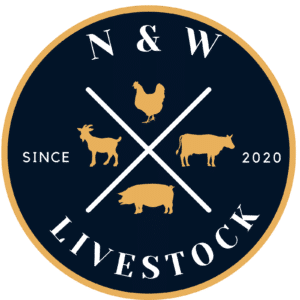Hand Rearing Birds
Rearing birds by hand is demanding, I want to point that out first off. It’s tiring and messy, you will constantly be cleaning up after them and these guys are so noisy.
Before you even start, if there is any chance their parents can raise them let them do so, it’s without doubt the best thing for the birds. If the birds are really young and don’t even have any fluff on them “recently hatched”, really consider if this is the right thing for them, they may have been rejected because there are health issues, the parents might know more than you do.
If you decide you have to try regardless these guys can be super cute and often smart, they are just bundled into super messy and vocal balls of fluff. What’s not to love.
Housing / Brooder Setup
The main key here is routine, warmth and hygiene, baby birds are going to poop and sit in the same spot so it’s highly likely they will form poo balls on their feet if they aren’t kept clean. This can cause burns and infections leading to other complications. These messy little buggers need to be constantly cleaned with warm water and cotton buds.
You need to make sure you are using a temperature controlled environment, using a hospital cage setup is going to make this a lot easier.
Setting the temperature and ensuring adequate ventilation is super important, you need to allow for airflow but not too much that could cause cold spots. The temperature setting will vary depending on age and species of birds.
We use our Hospital Brooder Kits, they make a great setup for rearing babies and treating sick birds. They come in two sizes, medium and large. We use the large as it requires less frequent cleaning in most cases.
-
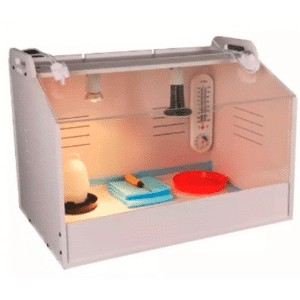
Chick Brooder Kit
$138.55 – $168.55 Select options This product has multiple variants. The options may be chosen on the product page
No matter what you decide to use the key here is hygiene and temperature control. As your babies develop feathers their needs for heat change so something that has a temperature regulator is super handy in the long run. A ceramic heat lamp for nights and heat globe for days can help setting their body clocks.
Feeding Equipment
-
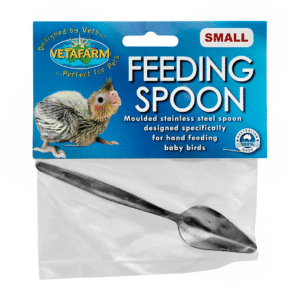
Vetafarm Feeding Spoon for Baby Birds
$10.95 – $11.95 Select options This product has multiple variants. The options may be chosen on the product page
Depending on what you are hand rearing and the age of the bird will depend on the best option. The safest option is using a syringe spoon, the next best would be a syringe but in some cases you may need to look at using a crop needle if the bird won’t take anything else.
If you are needing to crop feed with a crop needle please be sure to train yourself first, these tools are dangerous as they can cause damage to the crop when not used correctly but in some cases you may have no choice. It’s not hard it’s just a technique.
Get yourself a box of gloves, this is going to stop you getting covered in bird formula and acts as a little bit of a protective cover if your little ones decide to bite the hands that feed them.
We find that using a plain syringe can be a simple solution and tends to be what we start of with.
No matter the equipment be sure to wash everything thoroughly after use. This way you will have everything ready to go for the next feeding.
Preparing Formula
Formula is sticky stuff, the ideal consistency is often referred to as a pudding like consistency. Basically it’s got to be runny enough to be able to be drawn up in a syringe but thick enough to be able to be syringed out as a paste, the babies feed by turning their mouths to the side so if the formula is too runny it falls straight through, too thick and they can’t swallow it.
Key here is the temperature of the formula, it must be kept at their body temperature so that’s usually around 38’C but be sure to check on the requirements for the species that you are feeding.
Once the formula has been prepared and drawn up into syringes, we use a hot water bath to store the syringes prefilled with formula to make sure they stay at the correct temperature before feeding.
I can’t stress enough how important the temperature is, as soon as that formula is cold it causes issues with digestion, increases stress factors and can lead to a series of health complications.
-
Sale!
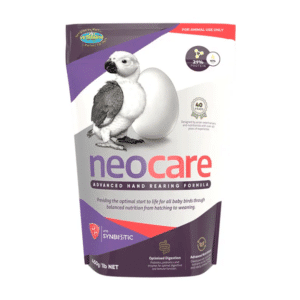
Vetafarm Neocare Bird Food
$19.99 – $195.95 Select options This product has multiple variants. The options may be chosen on the product page
Be warned, if the formula is too hot there is a serious risk of burning the crop, the greatest risk is usually to the first birds you feed so if you have mixed ages feed the larger birds first. If an accident was to occur they have a better chance of survival.
Often if the formula is too hot the babies are going to shake their heads and flick formula around, so stop feeding straight away and check the temperature on the back of your wrist, if you can feel it’s hot on your wrist, it’s too hot for the baby. Sometimes the formula can have hot spots so always be aware of how they are reacting to each feeding.
A burnt crop is a serious issue and often results in fatalities so be super careful.
Golden rule at the end of the day when it comes to preparing formula is to follow the instructions on the package, never use a microwave and make sure it’s well mixed with no lumps before adding that final little bit of water to get it to the right consistency. It’s easier to remove lumps when the consistency is thicker.
Feeding Times
Baby birds have some pretty high demands, as a guide you are looking at feeding every 2-3 hours for the first few weeks and every 4-6 hours after that, eventually as the birds start to fully feather up you will be able to cut back to twice a day until they are able to cope on seed alone, usually about 5 weeks in total.
Pay attention to seed consumption, when weaning the birds there is always a risk that their nutritional requirements are not met and they can become seriously malnourished often resulting in death.
Finishing on some good news, they don’t require feeding during the night, it’s important that their crops completely empty once a day so usually last feeds are around 11pm and first feed at 7am.
In Summary
Raising birds is demanding, but at the same time it’s facinating to watch how quickly they grow and the exciting changes you see in their development from day to day.
Always make sure your birds have access to fresh water and fresh bird seed once they are around 2-3 weeks old, this encourages them to eat on their own and is going to be a very welcomed sight as you approach the end of your rescue!
-

Universal Nitrile Examination Gloves
$14.95 – $18.95 Select options This product has multiple variants. The options may be chosen on the product page -

Budgie Mix – 5Kg
$15.95 Add to cart -

Avitrol Bird Lice and Mite Spray
$8.95 – $21.95 Select options This product has multiple variants. The options may be chosen on the product page -
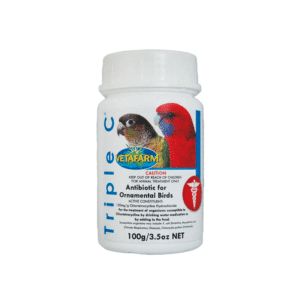
Vetafarm Triple C Antibiotic Powder
$27.25 – $85.70 Select options This product has multiple variants. The options may be chosen on the product page -
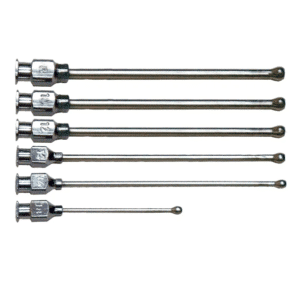
Medication Needles (Crop Needles)
$32.50 – $181.95 Select options This product has multiple variants. The options may be chosen on the product page -

Vetafarm Feeding Spoon for Baby Birds
$10.95 – $11.95 Select options This product has multiple variants. The options may be chosen on the product page -
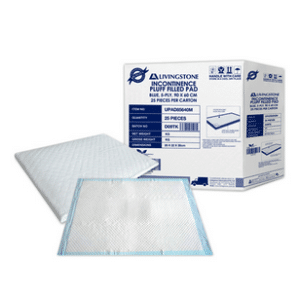
Absorption Underpad, 90 x 60cm
$2.95 – $44.85 Select options This product has multiple variants. The options may be chosen on the product page -

Syringe, 5ml, Luer Slip Tip
$0.75 – $29.95 Select options This product has multiple variants. The options may be chosen on the product page


